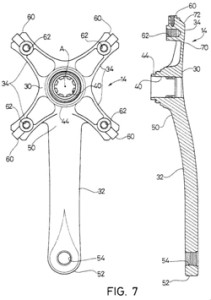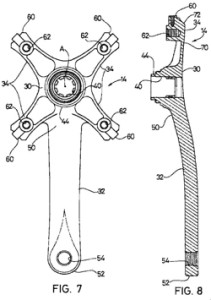Common Client Concerns
What assurances can you give that the information I provide to your company will remain confidential?
At Gallagher’s Patent Drafting, we understand the necessity of maintaining client confidentiality. Every employee signs a Confidentiality Agreement as a condition of their employment here. We will also provide a signed Confidentiality Agreement with any client or potential client who requires one.
How should I send the material to be used to create the patent drawings?
The response with comments is listed below in order of preference:
Email an electronic file: Sending an email with a file attached of the as-filed drawings is the preferred method for us to receive work. Since the drawing is already in an electronic form, this saves us the step of scanning the material. We can work with a wide variety of file formats which can be imported into our drawing program. Adobe Acrobat [PDF] files are very useful for this.
One potential drawback to this method is the file size of the attachment. Files larger than 20 megabytes usually cannot be sent as an email attachment due to Internet Service Providers [ISPs] constraints. Please use our ON-LINE ORDERING FORM if uncertain about the file size of your electronic files as it allows for file transfer of almost limitless size.
If the as-filed drawings are unclear, it may be very beneficial to provide us with the source material that was used to create the as-filed drawings, in order to produce a higher quality, more accurate finished product. It is understood that any reference material provided to help clear up quality issues of the as-filed drawings is only to help in the understanding of the as-filed drawings. We go by the as-filed drawings to produce the final formal drawings for filing and not any reference material provided.
Send hard copy: Sending drawings via the U.S. Post Office, Federal Express, messenger or other physical delivery method is the next best way to send us work. Sometimes, sending a hard copy is the only way to get a photograph into an application if an electronic file of a photograph is not available or of poor quality. Photographs sent to us this way can be scanned by us using the appropriate settings for a patent application.
For design patents, sending us the actual prototype is commonly done and very useful.
Fax the drawings: For some drawings, faxing them to us (with the intention that we work from the fax) can work out fine if the material faxes well. Faxing revisions to drawings we did is highly recommended as it is easy to mark up the printed drawings on your end with a dark pen (not pencil as it does not scan well) to indicate the revisions and then fax the drawings to us.
What does the objection, drawings not labeled separately or properly, mean?
In the process of preparing patent drawings, we frequently recommend that figures be separated in order to avoid the above objection. From our understanding of the patent office rules, each view of the device should have its own figure number, such as “FIG. 19”. The page on the left, below, shows a situation that we would recommend be broken up into two figures as the legend “FIG. 7” is not proper to be used to represent two views of the device. Our recommended result is shown on the right, below.
Frequently, our clients would prefer to not have to do this, as it means (at a minimum) that the specification will have to be amended. We estimate that there is a fifty percent chance that the drawing will not be objected to as it currently stands, but we recommend that it be separated into two figures because it is proper and to avoid an objection.
Ugh! Why did you break up the single page informal drawing so it is now on multiple pages?
BREAKING UP FIGURES:
With great reluctance, when a single figure will not fit onto one page due to size constraints, we break up that figure so that it fits onto multiple pages. Usually, this is a result of enlarging the text in the informal so that it meets the patent office requirement of 1/8 of an inch [0.32 cm]. We avoid doing this but in some cases this is the only solution to produce a patent drawing that meets patent office standards. When this is done, a smaller index figure is created that has the original FIG. number and shows the physical arrangement of the multiple pages that will be used to represent the original figure.
In this Example provided by the patent office, the index figure is FIG. 21. FIG. 21A and FIG. 21B (capital letters are required) are the figures that are used to represent FIG. 21. Other methods of showing the break in a figure can be used instead of a line as shown at the bottom of FIG. 21A. For example, a circled letter “A” at the end of one of the lines in FIG. 21A could lead to another circled letter “A” in FIG. 21B to indicate a continuous line between the two figures.
Alternate solution using CONT. for breaking up figures:
For many of our clients, rather than create an index figure as described above, they add the designation “CONT.” which is the abbreviation for the word “continued”, to the end of a figure legend for any figures that have been broken up onto multiple pages. For example, if informal figure 14 is broken up into two pages, the first page would be labeled “FIG. 14” and the second page labeled “FIG. 14 CONT.” without the quotations. We have checked with the patent office and this practice is against their rules. If drawings are being prepared as a result of an office action and “CONT.” is being used in the drawings but the office action does not mention it, we will continue to use it.
I only have a Prototype and need drawings prepared. Can you do this?
No problem. Clients frequently send us prototypes to prepare drawings from. The best method to send the prototype is via messenger (if local) or Federal Express. You can use any other means that you feel safe sending the prototype. It will be returned to you in the same manner sent to us.
Using prototypes to prepare drawings is the best method, compared to other methods such as sketches, engineering drawings, etc. Having the prototype in hand allows us to more easily understand the invention and to generate the needed views for the patent application.
Some large devices cannot practicably be transported to our office. We can arrange to visit the inventor’s site to prepare field sketches and/or photographs for reference.
Please note: The dollar value of a prototype is well understood by us, and it is treated with the utmost care. We know that a single prototype can represent many hours of work, by teams of people, and can contain information that would be very difficult or impossible to retrieve, should the prototype to lost or damaged. We take every reasonable precaution to safeguard it.
I am filing patent applications in multiple countries. Can you provide drawings that meet each countries requirements?
Yes, we can prepare drawings suitable for filing in foreign countries’ patent office. Also, we receive input from our clients as they are made aware of changing requirements for filing drawings.
Our job has been made easier in this regard since most countries are moving toward or using the PCT [Patent Cooperation Treaty] drawing standard. Drawings prepared by us already follow this standard since our work typically is either filed with the United States Patent and Trademark Office or the PCT.
I have heard that many patent illustration companies appear to be American companies but in actually are fronts to obtain work that is sent abroad to countries like India that have had confidentiality issues. Is this accurate? Does your company do this?
Yes it is true. Many patent illustration firms outsource from offices located in the USA to foreign countries.
In contrast, we never use foreign outsourcing. All work requests sent to Gallagher’s Patent Drafting are fulfilled within the US borders. This has advantages such as we work during your office hours and, based on client conversations, our language communication skills are better than our competition abroad. In addition, intellectual property confidentiality is a legitimate concern with foreign outsourcing.
Do you have experience using photographs in patent applications?
Yes, on numerous occasions. Filing a patent application that contains photographs is quite commonly done, when a figure cannot be adequately represented by a line drawing. Examples of this include:
photomicrographs of electrophoresis gels
blots
autoradiographs
cell cultures
histological tissue cross sections
animals
plants
in vivo imaging
thin layer chromatography plates
crystalline structures
ornamental effects in a design patent application
Normally, applications are filed with black and white (gray scale) photographs. Color photographs can be filed but only after special procedures are followed and approved by the Patent Office. If desired, we can easily convert color photographs to black and white.
We find that most of our clients now file drawings electronically (see: USPTO: Comments about Color and Grayscale Drawings), but we can print out the photographs in-house on photographic paper, whose size matches the paper size used in the application (usually either A-4 or letter size).
Why don’t the drawings you sent us meet patent office standards for margins?
We prepare drawings using A-4 size drawing format. If you printed the drawings onto letter size paper, 8 ½ x 11 inches then the margins would be incorrect. We use A-4 size format unless a client specifies another.
The USPTO accepts drawings on A-4 or US letter size format, but the PCT accepts A-4 size format only. By using A-4 as our default page size, we can provide drawings which will meet the page size and margin requirements for both entities, eliminating redundant work if a client wishes to file with more than one patent office.
Can you provide me with a price estimate for this work?
We often provide cost estimates for drawings, usually within two business days of receipt. We do not provide estimates for cases which require expedited turnaround time.
Below is an excerpt of some statements, for your information, from a typical estimate sent by email:
“This price is based on our Normal Rate. Drawings would be sent for review in ten or more business days from receipt of permission to do this work and receipt of all materials needed to complete this case. A faster turnaround time may be accommodated at a price consistent with our pricing schedule PRICING AND SCHEDULING
Please understand that the amount invoiced can be higher than the estimate should there be extensive revisions and/or additional work is requested subsequent to the estimate being provided.
We understand to not start work on this case unless we receive your permission.”
My original drawings and photographs don't reproduce well and are irreplaceable. Will you return them undamaged?
Definitely. We understand a client’s apprehension in relinquishing any original artwork and photographs that are irreplaceable. At Gallagher’s Patent Drafting, the originals are treated with the utmost care and will be returned to you in the same condition sent to us. We understand the value of originals and take the utmost care to return in the condition received.


